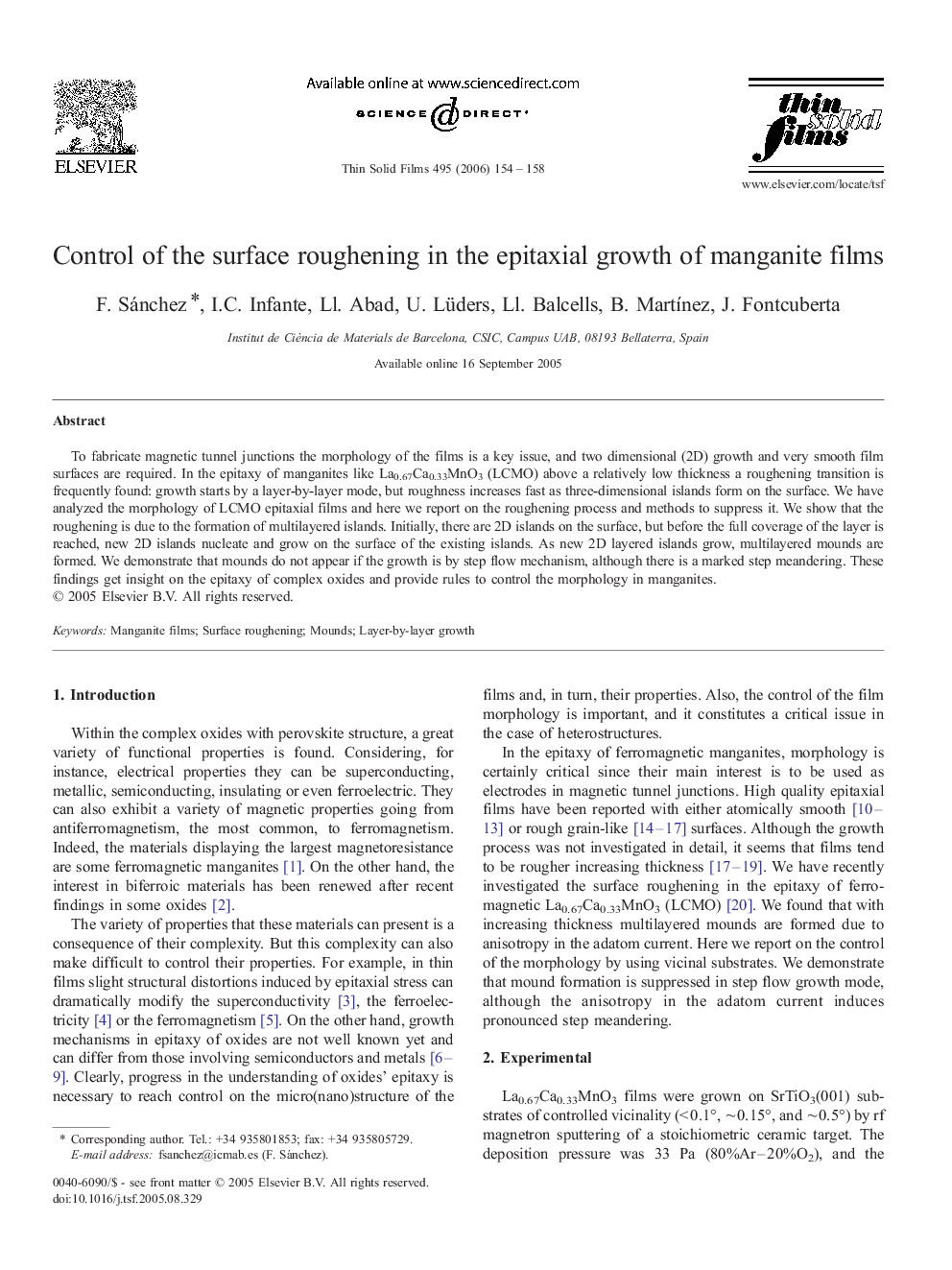| Article ID | Journal | Published Year | Pages | File Type |
|---|---|---|---|---|
| 1676783 | Thin Solid Films | 2006 | 5 Pages |
To fabricate magnetic tunnel junctions the morphology of the films is a key issue, and two dimensional (2D) growth and very smooth film surfaces are required. In the epitaxy of manganites like La0.67Ca0.33MnO3 (LCMO) above a relatively low thickness a roughening transition is frequently found: growth starts by a layer-by-layer mode, but roughness increases fast as three-dimensional islands form on the surface. We have analyzed the morphology of LCMO epitaxial films and here we report on the roughening process and methods to suppress it. We show that the roughening is due to the formation of multilayered islands. Initially, there are 2D islands on the surface, but before the full coverage of the layer is reached, new 2D islands nucleate and grow on the surface of the existing islands. As new 2D layered islands grow, multilayered mounds are formed. We demonstrate that mounds do not appear if the growth is by step flow mechanism, although there is a marked step meandering. These findings get insight on the epitaxy of complex oxides and provide rules to control the morphology in manganites.
